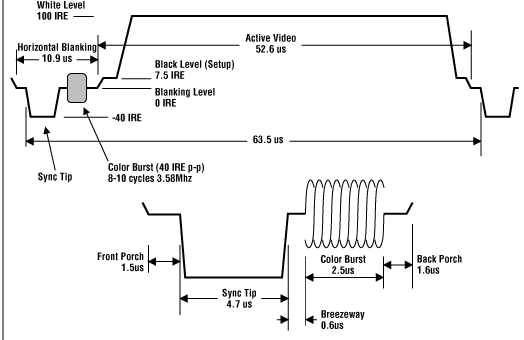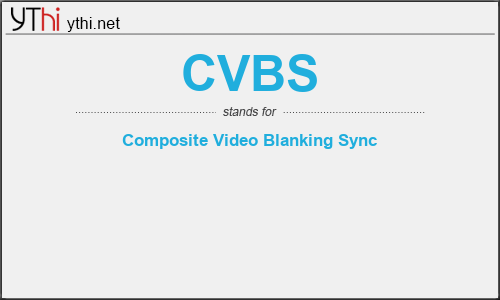What does CVBS mean? What is the full form of CVBS?
The Full Form of CVBS is Composite Video Blanking Sync.
Composite signals are the most commonly used analog video interface. Composite video is also referred to as CVBS, which stands for color, video, blanking, and sync, or composite video baseband signal. It combines the brightness information (luma), the color information (chroma), and the synchronizing signals on just one cable. The connector is typically an RCA jack. This is the same connector as that used for standard line level audio connections. A typical waveform of an all-white NTSC composite video signal is shown in below.

Composite signals
This figure depicts the portion of the signal that represents one horizontal scan line. Each line is made up of the active video portion and the horizontal blanking portion. The active video portion contains the picture brightness (luma) and color (chroma) information. The brightness information is the instantaneous amplitude at any point in time. The unit of measure for the amplitude is in terms of an IRE unit. IRE is an arbitrary unit where 140 IRE = 1Vp-p. From the figure, you can see that the voltage during the active video portion would yield a bright-white picture for this horizontal scan line, whereas the horizontal blanking portion would be displayed as black and therefore not seen on the screen. Please refer back to Figure 1 for a pictorial explanation. Some video systems (NTSC only) use something called “setup,” which places reference black at a point equal to 7.5 IRE or about 54mV above the blanking level.
CVBS
means
Composite Video Blanking Sync![]()
Translate Composite Video Blanking Sync to other language.


Leave a Reply
You must be logged in to post a comment.